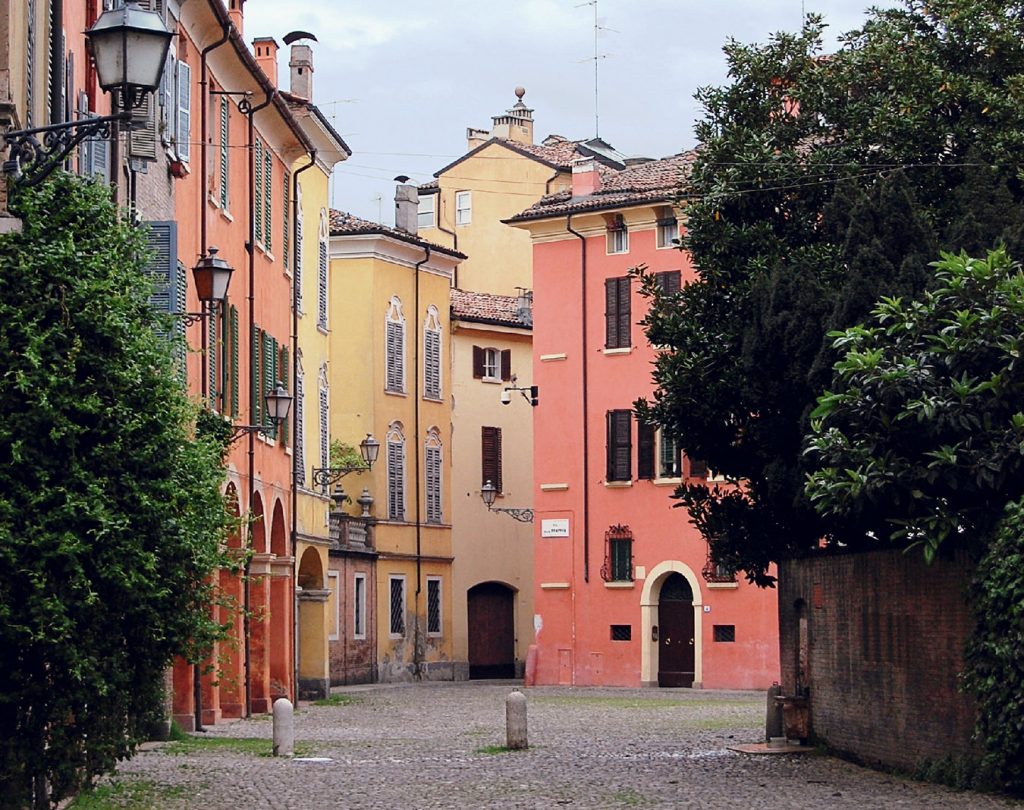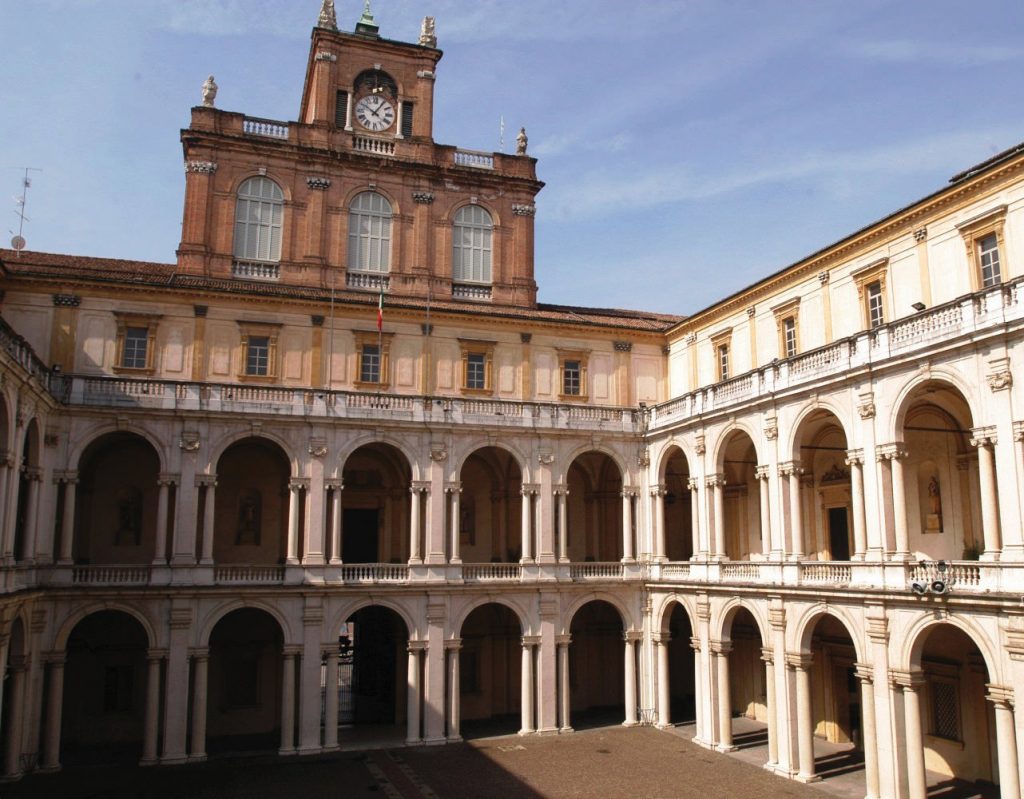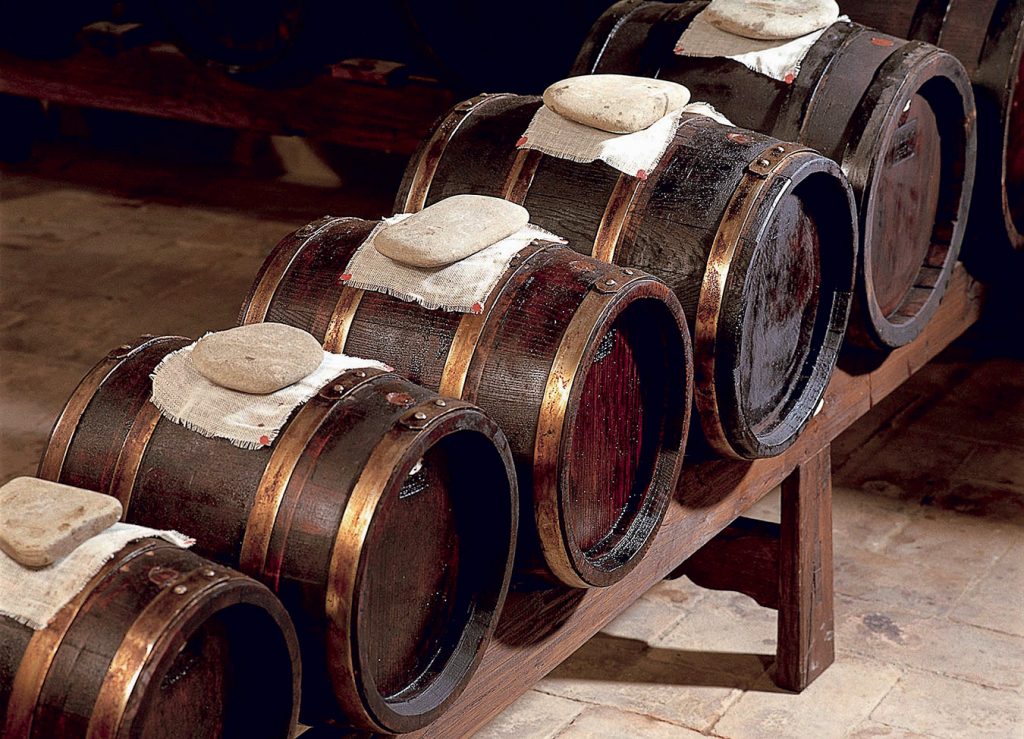Should you ever take the bullet train, the red one, from Naples to Modena, you will be leaving not just one city, or province, to enter another, but going into another world entirely. It is not only a matter of age, or of proximity, especially in the past, to the still-resonant Moorish influence in Southern Italy, but also a matter of approach, of industrialization, and of food. Modena, the province, part of Emilia-Romagna, is the birthplace of balsamic vinegar, cotechino, bollito misto, tortellini, and countless and intricate variations on Italian themes that find their most acute expressions in this province, in this commune, and in this town.
There is a historic town square, the Piazza Grande, a UNESCO World Heritage Site. The first stone of the Cathedral of Modena (the Duomo) was laid in 1066. The Town Hall was completed in the 17th and 18th centuries from several pre-existing buildings, with much of it built between 1500 and 1690. Some of the site’s Etruscan ruins can still be seen; as with much of Italy, the history is visceral and profound. Caffè Farini, just off Via Colatella, captures just about every Italian espresso cliché there is, and is all the more charming for that. The streets all around are clean and fairly wide, and because a festa is alive today, there are clowns, soldiers, jugglers, and musicians cavorting and fraternizing, an accordion player on virtually every street leading into the main square. Families afoot, bicycles and scooters yes, automobiles no, which perhaps explains the utter absence of any helmets. Also wonderfully absent are locks on the parked cycles.
“Our food today is famous because it is still made exactly the same way today as it was 50 years ago.”
Just down Via Coltellini, at Number 31, sits the venerable Da Danilo. Signora Angelina Danilo was a cook of great scale and focus, meaning she cooked just about everything known to the Modenese, and nothing but. Her tradition continues to this day. A quick fried pasta gnoccho is served with freshly shaved Parmigiano-Reggiano and Modena ham (not, the server says, at all like the ham from nearby Parma). Tortellini, and their big brother tortelloni, are stuffed pastas, but not just any stuffing is truly Modenese; for it be authentic, it must have ricotta, parmesan, and spinach, with a sauce of oil, onion, bacon, tomato, and cream, and served with a glass of Vecchia Modena. The tortellini en brodo is a capon broth with carrot, celery, and beef, cooked a minimum of six hours. And so it goes. Pecorino with fig jam and 35-year-old balsamic vinegar, green lasagna, bollito misto with its seven kinds of offal meats, a Vignola cherry cake. The server says, simply but emphatically, “Our food today is famous because it is still made exactly the same way today as it was 50 years ago”.
Not so very far away from the town centre sits the Maserati factory, a fixture, and always a popular tourist spot. Appointments are a good idea, though, and you might, for fun, ask various employees about their favorite restaurants. Plenty of stories to tell. One such place is Cucina del Museo, at Via Sant’Augustino, 7, yes, very near the museum. It is a tiny six tables, 21 seats, none of which are empty most nights. The rounded ceilings and arches front and back lend the room a museum-like quality, but the bustling kitchen and amazing food ushered therefrom make it a fun place to be. Paola Carradi and Alberto Vaccari have cooked in and run this place since they left Osteria Francescana in 1987. There are both “Traditional” and “Creative” menus, and mixing and matching seems like a good way to go. Such delights as langoustines atop artichoke soup, fried zucchini blossoms with a frisée salad, salami di Modena (which Alberto keeps in good supply in the wine cellar he frequently descends an outer staircase to fetch bottles from), tortellini en brodo, a half-wheel of the ubiquitous Parmigiano-Reggiano placed right on the table with a little knife so you can carve your own chunks—it is all perfect. The wine service, too: different glasses for the sparkling white wine di Modena and for the pink, and for the marvellous Andreoli Lambrusco.
Speaking of the three-Michelin-starred Osteria Francescana, the chef there is superstar Massimo Bottura, who has staked a claim for himself as one of the best-known chefs in the world, in part thanks to the San Pellegrino Restaurant Awards placing him for several years running in the top five. He also runs, with chef Marta Pulini, a fantastic little place called Franceschetta 58, where the food is a little more familiar to the local palate.
So, you can find it all in Modena, and come away wishing there were another week at your disposal, to explore, stroll, imbibe, and above all, eat. This is what they must have had in mind when the phrase “foodie paradise” was coined.











